JAPAN SHOWCASE|Great Tamba area
Walking in the steps of samurai
There is no embellished castle tower to keep watch over Sasayama, a city ringed by the mountains of central Hyogo Prefecture. Only thick stone walls mark the site where an early 17th-century fortress stood. Even in those days, the castle keep was a relatively unimpressive construction when compared to the edifices of major powerhouses like Osaka and Kumamoto castles.
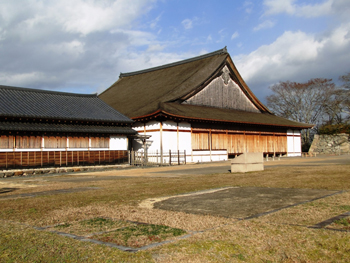
Yet what Sasayama Castle lacks in flair compared to its brethren, it more than makes up for in drama. The history of these formidable stone walls is torn from the pages of the last years of the bloody Sengoku Period (the Warring States Period). Following the Battle of Sekigahara in 1600, the tattered remnants of the samurai who backed losing general Toyotomi Hideyoshi retreated to OsakaCastle to throw their support behind Hideyoshi's young son Hideyori. Victor of the battle, Tokugawa Ieyasu, determined to smash the last obstacle blocking his ascent to an uncontested rule of Japan, knew that a siege of Osaka was inevitable.
Though numerous castles dotted the area north of Osaka, none blocked the passage of goods to the city from daimyo (feudal lords) in the west still loyal to Toyotomi. In 1609, Tokugawa sought to remedy this situation by ordering the construction of a castle on a small hillock in the plains of Sasayama, directly in the path of the supply route from the San-in Coast.
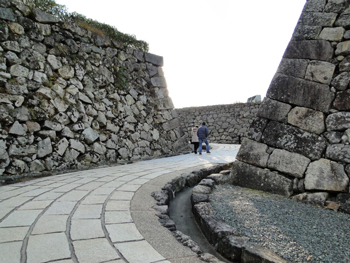
With astute political awareness, Tokugawa called on the manpower and supplies of the lords of western Japan, those whose loyalties were somewhat questionable, to oversee SasayamaCastle's creation. With their attention otherwise diverted and their coffers bled dry in an effort to meet the costs of the rapid construction, Tokugawa was virtually assured that any potential enemies had neither the time nor the money to rise up against him.
From the beginning, the building process was plagued with difficulties. The immense stones used to form the thick walls had to be transported from kilometers away, dragged through rice paddies and farmers' fields on carts and sleds. Once the stones were on site, builders were forced to contend with thick bedrock that made laying the foundation a veritable nightmare. It took two years alone to dig a well deep enough through the rock to find an inexhaustible water source. The walls, however, were raised in less than a year, due to Tokugawa's impatience to begin the siege of Osaka.
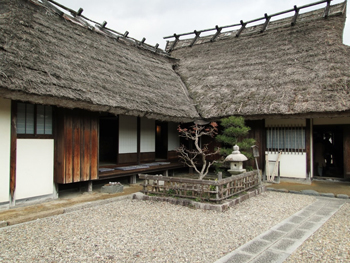
A walk around the outside of Sasayama's walls today reveals the faint traces of the builders' marks, cut into the rocks to represent the overseeing lord to which those particular workers reported. My traveling companions and I trace our fingers over the various shapes, circles and diamonds, and swirls of indeterminate form. Though built with the notion of defense in mind, no war ever came to Sasayama and the walls remain mostly in their original condition. Several meters thick and seemingly impenetrable, today they overlook a quiet countryside of vegetable farms and distant hills.
Near the castle, the samurai district (or bukeyashiki) boasts a few thatched-roof homes that once sheltered members of the warrior class. Near the end of a quiet lane, visitors are welcome to step into the Anma house, the former residence of a lower-class samurai. His family possessions — ranging from antique chests to his swords to various heirlooms — are on display in the neatly kept home. The peaceful garden, however, captures the most attention with its unique suikinkutsu fountain. We listen as our guide drips water over the rocks in front of the basin, the delicate tinkling sound of the liquid amplified in the hollow tubes of the bamboo we each put up to our ears.
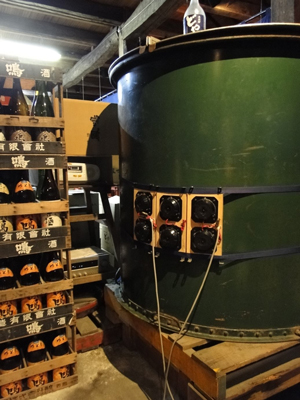
From the samurai district, it's a short stroll through the center of Sasayama to the Hohmei Sake Brewery. Though the name Hohmei has only been in use for a little over a decade, the same company has been making sake here since 1797. The hanging sugidama (a ball of cedar needles) over the door indicates when the next batch of sake is ready for purchase and consumption, but visitors are welcome to drop by at any time for a look at the exhibits related to the brewery's history, and a taste of the business' best sakes and wines.
Sixty-five-year-old brewer Sakyo Ikai takes us into the kura (storehouse) behind Hohmei's tasting room and leads us through the process of sake making. In previous centuries, the town's farmers would spend the agricultural off-season in nearby cities, learning the sake trade and eventually bringing the craft back to Sasayama.
The brewery's museum boasts threadbare washing baskets and massive barrels in which the steaming rice was stirred by hand. A pair of woven straw boots stands by the largest tub; when the temperature of the rice would reach 100 C, workers would don the boots and enter the tubs to shovel out the scalding grains. Ikai-san also points out the old stained canvas bags used for straining the sake “mush” and the insulated room where the koji was added, enzymes that played a crucial role in the fermentation process.
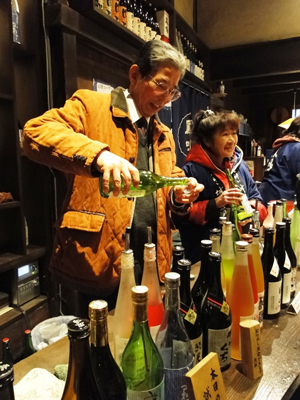
While most breweries would be content to let their sake simply ferment for the requisite 50 to 60 days, Hohmei takes things one step further. Just as expectant parents play Beethoven for their offspring in utero, each barrel of alcohol here is hooked up to its own set of speakers and everything from Mozart to Japanese folk music is pumped through the wood. Allegedly, the vibrations increase the smoothness of the sake, but I reserve my judgment for these unconventional methods until I've tasted the goods.
Out in the tasting room, Ikai pours me a glass and waits for my reaction. I have to admit that the junmaiginjo variety — where the rice is polished down at least 50 percent — is remarkably good, though it is the unique local wines that end up being my favorite. I stock up on chestnut and black bean vintages, knowing I'm not likely to find them in any stores outside the region.
As the sun sets, we take our leave of the brewery and Sasayama itself, the lingering traces of Hohmei's sake fortifying us in the frigid night.




